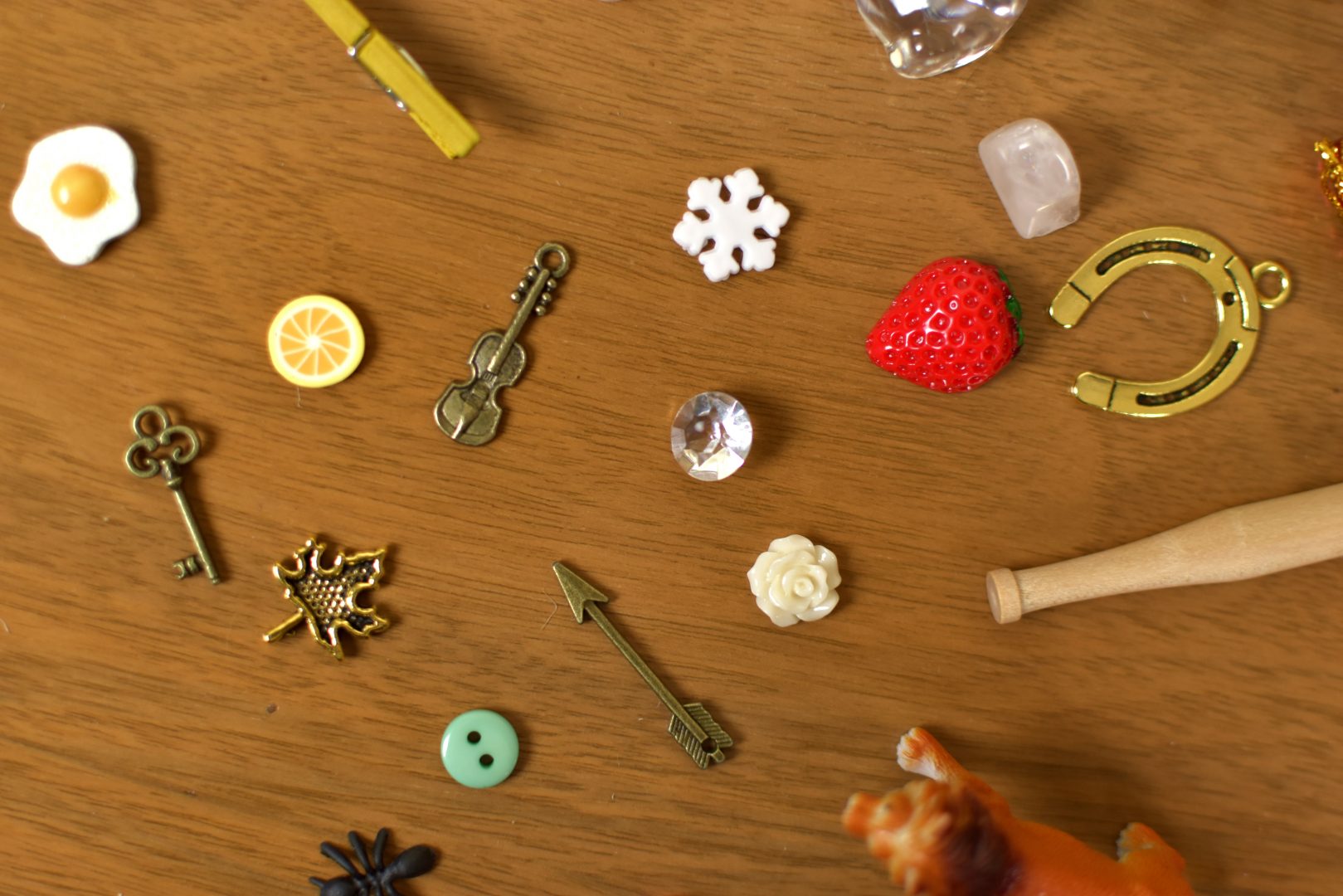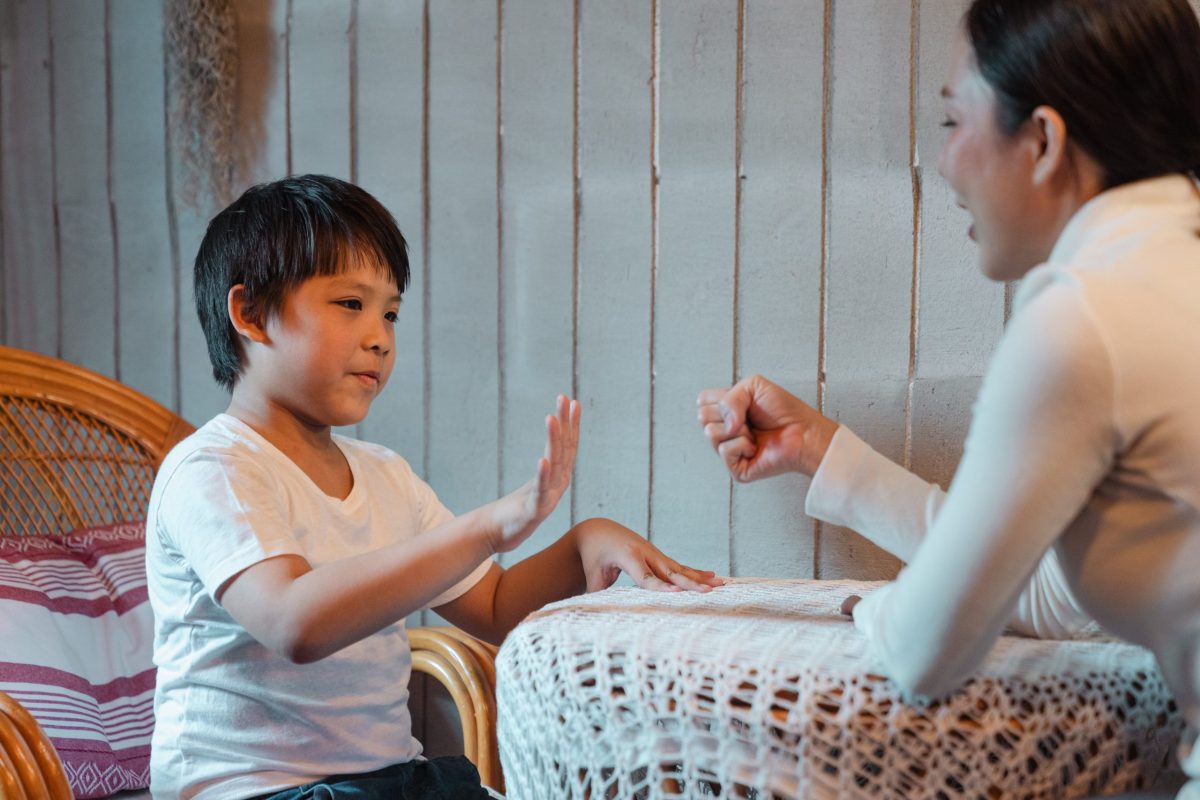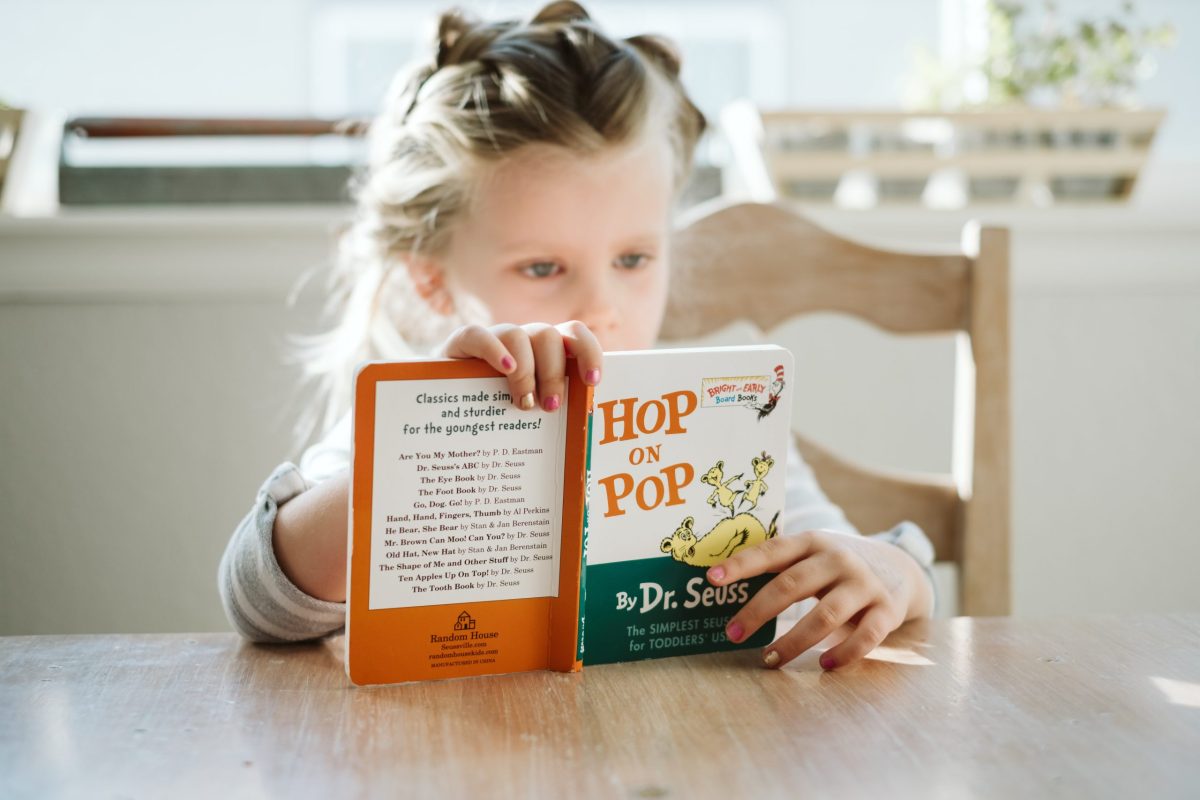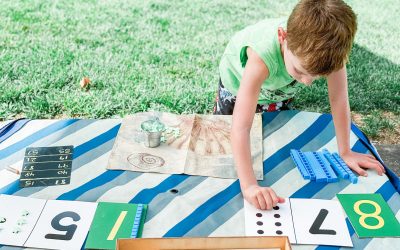Montessori Rhyming Games
Rhyming is a literary device that we use to make beautiful poetry and catchy songs, but that’s not all. A significant amount of research highlights that rhyme and rhythm can help with memory and retention. Pretty cool, right? Using Montessori rhyming games and activities is a great way to introduce rhyme and build your child’s brain.
If you’re eager to incorporate Montessori rhyming games into your language curriculum and routines, you’re in the right place!

The Importance of Concrete vs. Abstract
Montessori chooses to explore concepts with hands-on and realistic materials like language miniatures because of the importance of concrete learning. But what does this mean? Dr. Montessori believed it was valuable for children to handle and manipulate tangible materials while beginning to learn concepts like language, science, and math.
Concrete learning involves using physical and sensory experiences. In this approach, children manipulate and engage with real objects, making learning a whole-body experience. The Montessori method heavily emphasizes concrete learning, believing children absorb more when physically interacting and affecting their environments. “What the hand does,” Dr. Montessori famously taught, “the mind remembers.”
Abstract learning, on the other hand, focuses on theoretical and conceptual ideas. It often involves symbolic representation, such as words and symbols, and is typically presented in later stages of education when a child has developed a solid foundation in concrete learning.
Objects like our starter set of Montessori language miniatures are a cross between abstract and concrete learning. However, as rhyme is an abstract idea, teaching the concept of rhyme with something physical (albeit representative) allows children to work on their sensorimotor skills. This activity connects the visual, tactile, and auditory experiences so children make links between words, objects, and sounds.
Using Montessori Rhyming Games at Home with Language Miniatures

Montessori rhyming games are designed to help kids develop their phonemic awareness skills. Phonemes, a fancy word for the distinct sounds that make up words, are the literacy building blocks for reading and spelling. With that in mind, here are five simple and engaging ideas for using language miniatures to teach rhyme and rhyming patterns at home.
1. Rhyming Basket with Language Miniatures
What You’ll Need:
- Mat
- Basket
- 2-3 language miniatures
Presentation:
Start with a mat or table where your child can work comfortably. Gather a selection of small objects or language miniatures that all rhyme, such as a cat, hat, bat, and rat.
Next, place these rhyming objects in a basket. You start and pick out an object one by one. As you say the name of that object aloud, particularly emphasize the individual letter sounds. If you struggle to teach the isolated sounds, Lindsey, a speech therapist over on Speechy Things, has some fantastic speech therapy videos and activities.
Next, encourage your child to pick them out one by one. As they do so, ask them to identify and say the rhyming words aloud. See if they can identify why these words rhyme. This activity helps develop phonemic awareness, vocabulary, and auditory discrimination.
2. Rhyme Sorting Activity with Language Miniatures
What You’ll Need:
- Mat
- Basket
- 4-8 language miniatures
- Optional: Sorting tray. An empty egg tray is great for this!
Presentation:
Start with a mat or table where your child can work comfortably. This Montessori rhyming game builds upon the activity above.
Gather your language miniatures. You’ll need an even amount for this activity. Up to eight works best.
Ensure that most of the language miniatures you put in the basket belong to the same rhyming family. So, for example, if you’re focusing on the -ing rhyming word family, you could choose a ring, king, and wing. Select at least one miniature that doesn’t rhyme with the rest. In this example, “sock” could work.
Next, put all your chosen objects in a small basket and begin picking them out individually. Again, isolate the sounds in each word: “RING, R, I, N, G, “RING.”
Once you’ve presented each object, ask your child if they can sort them into their rhyming families. Can they find the odd one out?
You could have two sets of rhyming families to make this sorting activity more challenging.
3. Rhyming Pairs with Language Miniatures
What You’ll Need:
- A mat or table
- A collection of language miniatures representing pairs of rhyming words
- A basket
Presentation:
Present the miniatures before you start. Use a mix of simple language miniatures like “cat,” “hat,” and “mat,” or “ham,” “jam,” and “ram,” or “bun” and “sun.”
Make sure each miniature in the basket has a rhyming pair.
You can start by picking one of the language miniatures. Say it aloud, and place it on the mat.
Invite your child to find its rhyming pair in the basket. If they struggle, don’t worry; you can help them by showing them an example.
You can also put this activity basket on your language shelf for your child to choose freely. Follow your instincts and change around the miniatures if you observe your child isn’t engaged or needs a new challenge.
4. Using Hand Rhymes with Language Miniatures

This is an extension of the previous activity for kinesthetic learners who need to move around. You could even create a traditional hand rhyme-themed basket like “Itsy Bitsy Spider” to reinforce learning. Choose your child’s favorite, or keep it simple with rhyming pairs.
What You’ll Need:
- A mat or table
- A collection of language miniatures. A few rhyming pairs work. You could also choose to represent parts of a traditional hand rhyme. For example, for “Itsy Bitsy Spider,” you could have a spider, a water spout, a cloud, and a rain droplet for waterspout.
- A basket
- Some gestures for each rhyming word
Presentation:
Create a set of simple hand rhymes or gestures for each rhyming pair. For example, when showing the cat and hat miniatures, you can make a cat-like gesture by extending your fingers to mimic whiskers and a hat gesture by placing your hand on your head.
Encourage your child to participate in the hand rhymes by mimicking your actions while saying the rhyming words aloud.
After introducing the initial rhyming pairs, challenge your child to create their own hand rhymes or gestures for these pairs using the available language miniatures.
5. Storytelling Activity

What You’ll Need:
- Comfortable place to sit
- Rhyming books
- 3-6 language miniatures for each story
Presentation:
This activity could be a great part of your Montessori circle time routine. Plus, younger children who aren’t quite ready for rhyming language presentations can join in, too.
Gather some rhyming books and read them aloud together. As you read, you can emphasize rhyming word families and words with similar ending and beginning sounds.
If you want to include some mini objects, or your child is particularly sensitive towards matching, sorting, or finding, you can choose a specific book. Before you start, read it and select 3-6 language miniatures corresponding to your chosen story.
As you read, pause to highlight rhyming words using the language miniatures.
Children can find the hidden rhyming miniatures around the room for an extra challenge. Here are some examples of rhyming books and the objects you could use for them:
“Hop on Pop” by Dr. Seuss
Example mini objects: Cup, pup, mouse, house, ball, sun for day, tennis racket/toy for play. Magnifying glass for see, bee, red, and bed.
1, 2, 3 – A Montessori Reading Book Series by Pauline Meet
Example mini objects: Hen, pen, house for den.
“Chicka Chicka Boom Boom” by Bill Martin Jr. and John Archambault
Example mini objects: Coconut tree, letters A-Z, and apple.
Montessori-Friendly Rhyming Books
- “The Nature Trail” by Benjamin Zephaniah
- “The Rainbow Fish” by Marcus Pfister
- “Polar Bear, Polar Bear, What Do You Hear?” By Bill Martin, Jr.
- “Pass the Jam, Jim” by Kaye Umansky and Margaret Chamberlain
- “Fred” by Mick and Chloë Inkpen
- “I Wrote You a Note” by Lizi Boyd
Rhyming Fun Using Montessori Rhyming Games
Combining rhyming games with language miniatures can be a powerful hands-on method for improving your child’s ability to distinguish sounds. Helping them decode and encode words to retrieve vocabulary later.
We’d love to know your favorite rhyming books— drop them in the comments and let the rhyming fun continue!




0 Comments